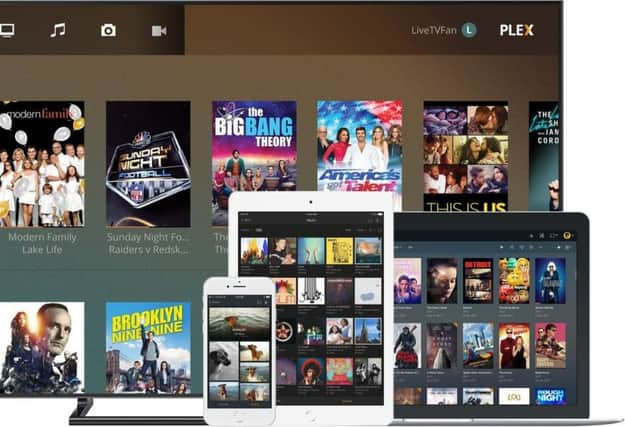Plex is like hiring a librarian to look after your music


Sonos, the market leader in home streaming speakers, has made the listening part easy, but the business of accessing your music in the first place needs a system of its own.
Many of us use our phones in the same was as those carrying cases we used to cart our records around in: mobile jukeboxes for the discs in which we are currently interested. The bulk of our library is left lying on a computer somewhere.
Advertisement
Hide AdAdvertisement
Hide AdBut with a system like Plex installed on the computer in question, you and everyone else in the family can access all your tracks on all your playback devices.
Plex is a home media server, which means it indexes and plays on demand all the files you tell it to. It does the same for videos that you own, and for your photo collection. It not only keeps track of everything but matches songs against a database and dresses them up with pictures of the recording artists. This, if you haven’t used a media server before, is its most revelatory feature, turning your collection from an unruly list into a designer library. You don’t need to gather your Pink Floyd albums into a set because Plex will do it for you.
The content can be scattered across all the computers on your network but Plex runs on just a single, central machine – ideally one that you leave on all the time. And although it charges for premium features, its principal functions – possibly the only ones you will need – are free.
There are two parts to Plex: the server and media player. Both are software programs that you download from the internet; the server only once and the player for as many of your devices as you want. Each player logs into the central server and finds the track you want.
Advertisement
Hide AdAdvertisement
Hide AdYou can do this even on the move, so long as your server remains switched on and you pay a one-off fee of around £5 to unlock a mobile app. You can even hear or watch when you’re abroad, preferably when you’re connected to wi-fi.
And as a whole-house system, it’s hard to beat – partly because you may already have Plex players installed without knowing it.
Sonos has it, as do gaming consoles like the PlayStation 4 and Xbox One, and many smart TVs include it in their built-in app stores. Streaming sticks like the £25 Roku Express also have it, and apps are readily available for every phone and tablet. If you have an AV receiver that can access the internet, it’s likely to be on that, too.
Setting up the system is reasonably easy, so long as you know where your files are stored. If they are on multiple machines, it helps to make them visible to each other, through the sharing facilities of your operating system. If yours is Windows, this will be the most fiddly part of the operation, but in theory, any currently switched-on PC should appear in the Network section of Explorer, from it they can be assigned a drive letter like the c: prefix of your main hard disk.
Once you’ve done that, Plex will monitor each media location for you, and add new content to your library automatically. It’s like employing a librarian to look after your collection for you.